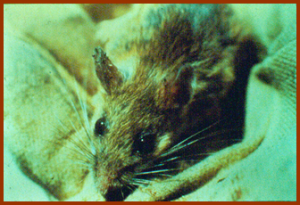
SHARE THIS ARTICLE:
Rodent-Targeted Bait Vaccine Shows Decrease in Lyme Disease Transmission

The Connecticut Agricultural Experiment Station (CAES) and US Biologic, Inc. released the publication of a field trial study showing the effectiveness of an orally-delivered anti-Lyme vaccine that targets the white-footed mouse, the major wildlife source of Lyme disease.
The study took place in the residential area of Redding, CT, over a three-year time period and showed substantial decreases in the number of infected mice. One year into the study, test sites that had been treated with the vaccine showed a 13X greater decrease in blacklegged ticks (Ixodes scapularis, the primary vector associated with the spread of disease) infected with Borrelia burgdorferi (the bacterium that causes Lyme disease) compared to control sites (i.e., 26% drop versus 2% drop).
“Fewer infected ticks mean less infection in the field overall,” says Dr. Kirby C. Stafford, Chief Scientist and State Entomologist, “So the decrease would be greater year-over-year that the vaccine is applied.”
A second effect, which has been observed in previous laboratory-based studies showed that the vaccine causes the mice to generate antibodies and therefore previously infected ticks act as a ‘xenodiagnostic marker’ of vaccine impact, meaning once they ingest the antibodies, while feeding on vaccinated mice, the ticks then become ‘cleared’ of infection.
Dr. Scott C. Williams, Agricultural Scientist and co-author of the study verified that when non-infected mice feed on vaccine-coated pellets, they are then protected from the Borrelia burgdorferi infection. “Non-infected ticks, therefore, cannot pass the disease to other animals, including humans” he says.
The study’s findings were published in the peer-reviewed publication, Experimental and Applied Acarology. Click here to view the press release from The Connecticut Agricultural Experiment Station.





